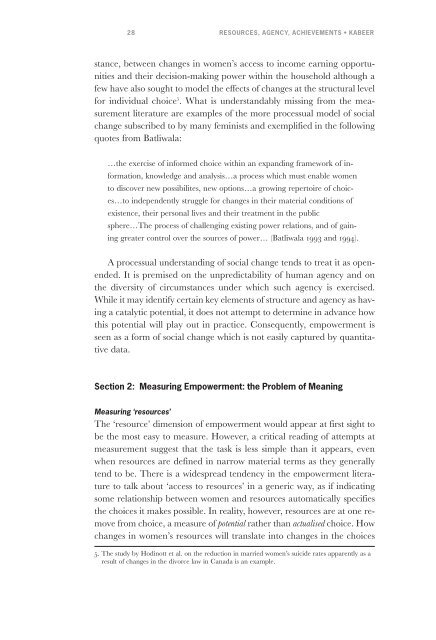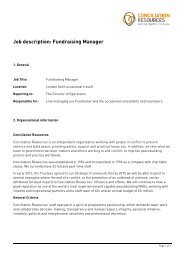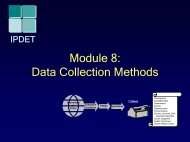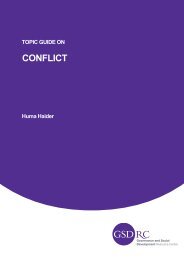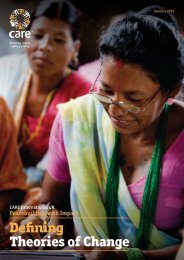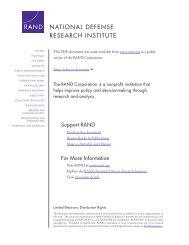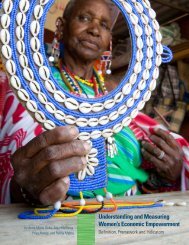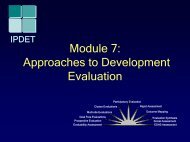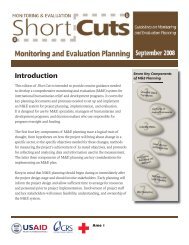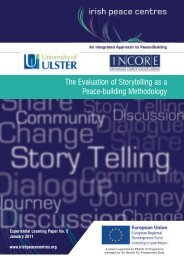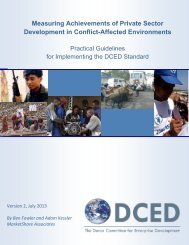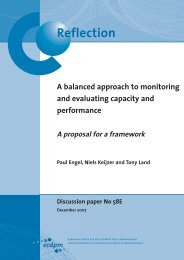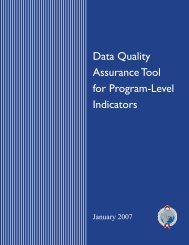Discussing Women's Empowerment - Sida
Discussing Women's Empowerment - Sida
Discussing Women's Empowerment - Sida
Create successful ePaper yourself
Turn your PDF publications into a flip-book with our unique Google optimized e-Paper software.
28 RESOURCES, AGENCY, ACHIEVEMENTS • KABEER<br />
stance, between changes in women’s access to income earning opportunities<br />
and their decision-making power within the household although a<br />
few have also sought to model the effects of changes at the structural level<br />
for individual choice 5 . What is understandably missing from the measurement<br />
literature are examples of the more processual model of social<br />
change subscribed to by many feminists and exemplified in the following<br />
quotes from Batliwala:<br />
…the exercise of informed choice within an expanding framework of information,<br />
knowledge and analysis…a process which must enable women<br />
to discover new possibilites, new options…a growing repertoire of choices…to<br />
independently struggle for changes in their material conditions of<br />
existence, their personal lives and their treatment in the public<br />
sphere…The process of challenging existing power relations, and of gaining<br />
greater control over the sources of power… (Batliwala 1993 and 1994).<br />
A processual understanding of social change tends to treat it as openended.<br />
It is premised on the unpredictability of human agency and on<br />
the diversity of circumstances under which such agency is exercised.<br />
While it may identify certain key elements of structure and agency as having<br />
a catalytic potential, it does not attempt to determine in advance how<br />
this potential will play out in practice. Consequently, empowerment is<br />
seen as a form of social change which is not easily captured by quantitative<br />
data.<br />
Section 2: Measuring <strong>Empowerment</strong>: the Problem of Meaning<br />
Measuring ‘resources’<br />
The ‘resource’ dimension of empowerment would appear at first sight to<br />
be the most easy to measure. However, a critical reading of attempts at<br />
measurement suggest that the task is less simple than it appears, even<br />
when resources are defined in narrow material terms as they generally<br />
tend to be. There is a widespread tendency in the empowerment literature<br />
to talk about ‘access to resources’ in a generic way, as if indicating<br />
some relationship between women and resources automatically specifies<br />
the choices it makes possible. In reality, however, resources are at one remove<br />
from choice, a measure of potential rather than actualised choice. How<br />
changes in women’s resources will translate into changes in the choices<br />
5. The study by Hodinott et al. on the reduction in married women’s suicide rates apparently as a<br />
result of changes in the divorce law in Canada is an example.


